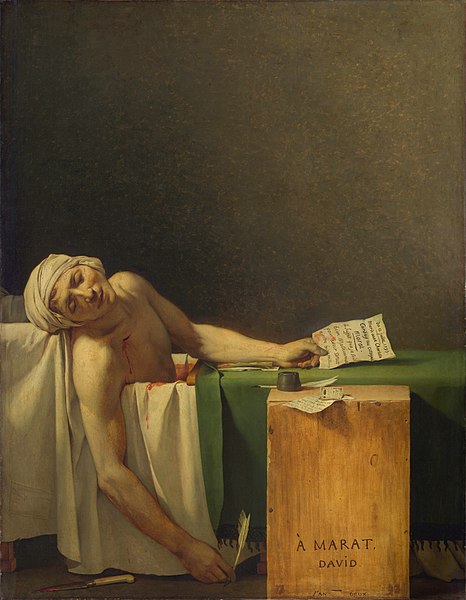Cleopatra Adorning the Tomb of Marc Anthony
7:00 AM| Angelica Kauffmann, Cleopatra Adorning the Tomb of Marc Anthony, 1770 |
Love, may we all find it, feel it, and allow it to surround us. The story of Cleopatra and Mark Anthony is the most classic "real life" Romeo and Juliette story. Their love that spanned kingdoms has inspired countless films, plays, books, and works of art, including this interpretation by the lady of the Neoclassical world, Angelica Kauffmann.
Swiss child prodigy and son of an esteemed church painter, Angelica Kauffmann got her start early into the art world, and in her many travels around Europe, she had the opportunity to make the acquaintance of several truly great painters of her day. Their influence on her craft is unmistakeable, yet her works are different from theirs. They posess the feminine perspective, an element that the others could only hope to channel. While the great men of this time paint political statements about the revolution, such as Jacques Louis David's Death of Marat or Oath of the Horatii, Kauffmann focuses on the women's side, the familial closeness. Her work has the same trademark Roman-type faces and the stunning color scheme but there is a level of care in her subjects that sets her apart from the bold works of David. Even his images of family, like in The Lictors Bringing Brutus the Bodies of His Sons, the audience sees of the women what is purely public. He shows the mother mourning boldly, as a man would, but reveals nothing of the secret, intimate tenderness between two people.
In an account of Dennis Diderot's travels to Tahiti, he recalls a man speaking scathingly of the differences in public sexuality between Tahitians and the Europeans. The angry Tahitian points out the outstanding level of guilt that cloaked the European idea of sex, and frankly still does. While Europe hides from their sexuality and outright ignores it in public, it does not diminish the heart that remains in the private moments. These men who try to paint families or love do little to capture that innocent, natural closeness that comes as part of love, not the public appearance of a relationship, but the sweet, devotional love that permeates all things living and dead. From this fundamental understanding the heart of this painting blossoms.
There is no harshness in this work. The spotlight-style lighting makes Cleopatra and the girls around her glow with warmth. Cleopatra's face is shadowed by grief but the sweetness is unmistakable in the flowers she drapes over her lover's casket, symbolizing her love. Her white robes and pale skin create a ghostlike feeling that hints at her impending suicide. Every eye in the room stares in her direction. From the girls assisting her to the mourning soldier, they seem drawn to her, observing her in this act. In Cleopatra's body posture and eyes, it is clear that she hardly sees anyone around her. Her eyes stay trained on Marc Anthony's resting place, totally devoted. The flame of their love continues to burn and illuminate her and those others lucky enough to be in her presence. This last intimate goodbye between lovers is the natural, unshakable, and affectionate quality that the Tahitian man claimed was absent in Europeans. This painting is a testament to the primal nature of this love, so strong that it can never truly be eradicated. Whether faced with death, or merely a guilt ridden society, love prevails in its most natural form as our greatest human desire: connection.











0 comments